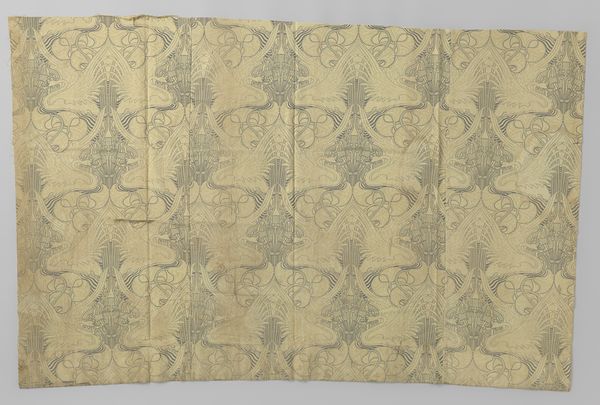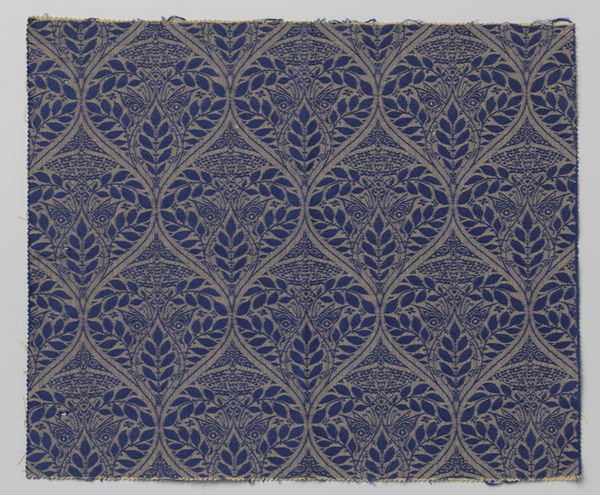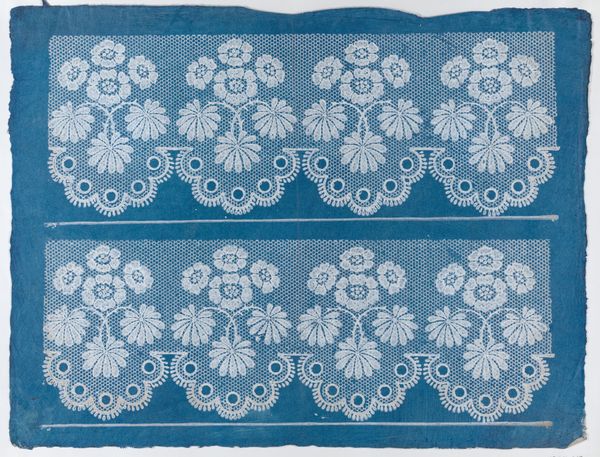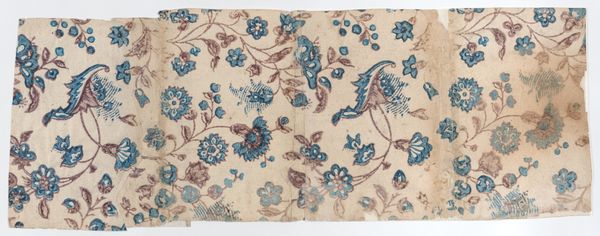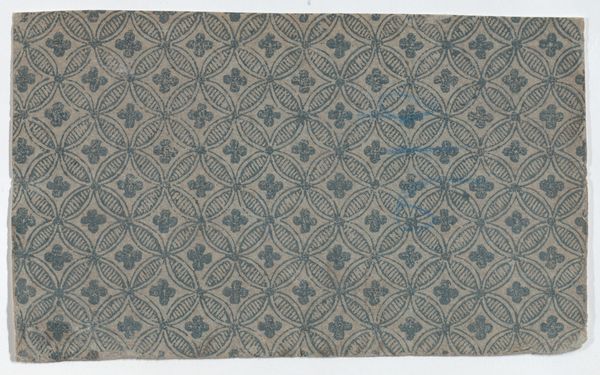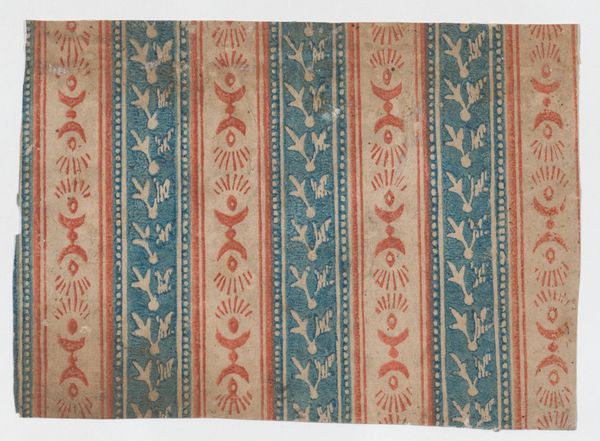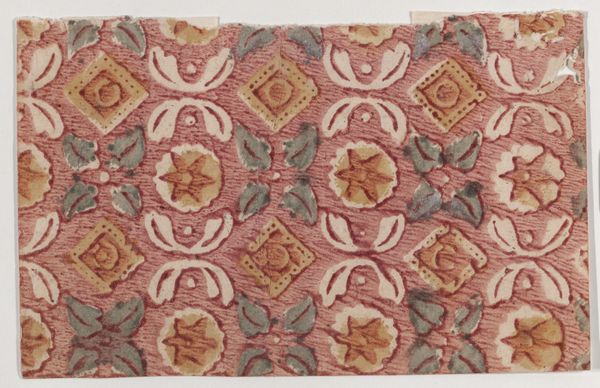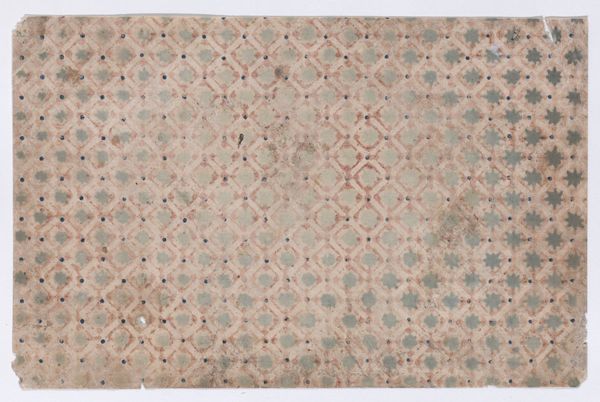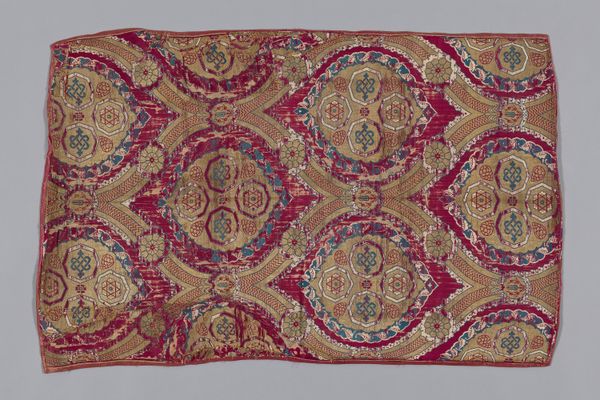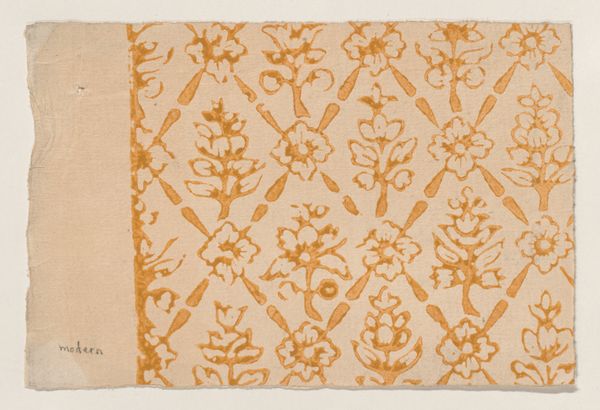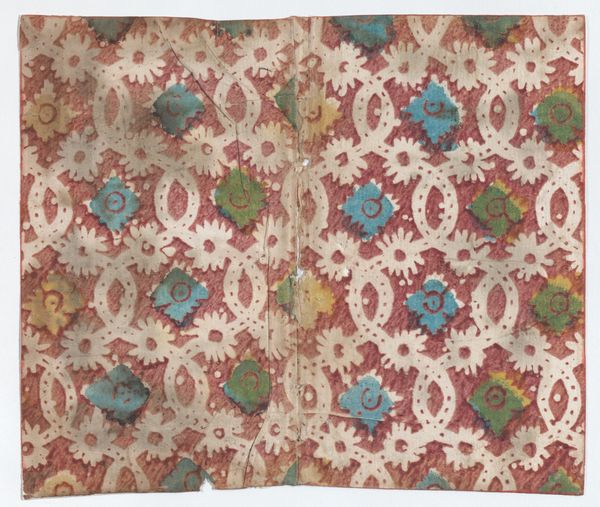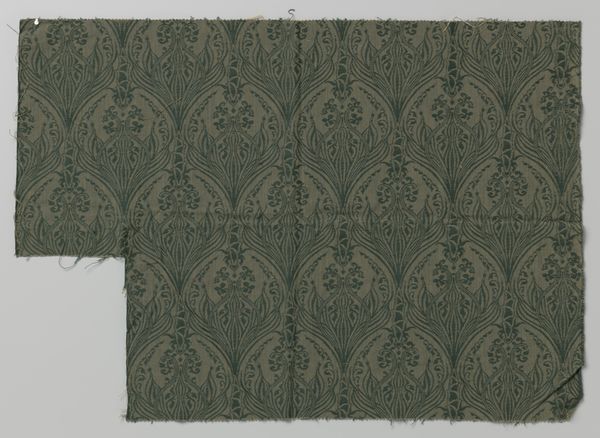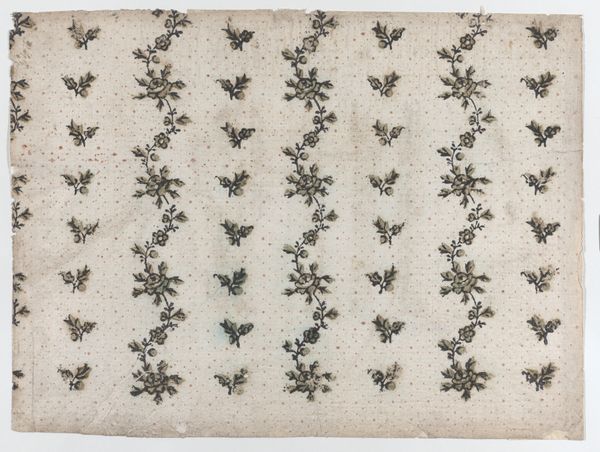
Book cover for Ferdinando Giorgi's Estratto, Florence, 1786 1781 - 1791
0:00
0:00
drawing, print, paper
#
drawing
# print
#
paper
#
decorative-art
Dimensions: Sheet: 7 7/8 × 11 1/8 in. (20 × 28.3 cm)
Copyright: Public Domain
Editor: We're looking at the book cover for Ferdinando Giorgi's "Estratto," a drawing and print on paper from Florence, dating roughly between 1781 and 1791. The pattern feels repetitive yet elegant with its blue diamond grid and floral details. What structural elements stand out to you in this piece? Curator: Indeed. Formally, I'm drawn to the rigorous geometry at play here. Note the deployment of the lozenge—or diamond, as you called it—as the foundational structural unit. Each lozenge contains, in turn, a rosette, creating a sophisticated play of figure and ground. The artist cleverly uses variations in color, alternating between hues within the grid, to avoid a completely static composition. Have you considered how the use of color creates internal relationships within this work? Editor: I see that, the varying of colour makes the grid visually engaging! It also stops it from feeling too flat. But what's the purpose of creating such complexity for just a book cover? Curator: Purpose, in this instance, becomes a rather complex matter when looking at the structural composition. Note how the intricate design suggests more than simple functionality. Rather, observe how the careful detailing may point towards notions of value. Do you think the printmaker considered similar implications while using certain material, scale, or symmetry to portray a certain message to their target audience? Editor: I suppose adding detail implied quality to consumers at that time? Considering the amount of careful structural composition we've seen. This book cover certainly held value. Thank you for expanding my views on structure, material, scale and symmetry to analyze art beyond initial assumptions! Curator: A keen insight! It is rewarding to consider not just what a work depicts, but *how* it depicts. Considering how various structural attributes influence or communicate to viewers holds a world of implications about form and composition.
Comments
No comments
Be the first to comment and join the conversation on the ultimate creative platform.
